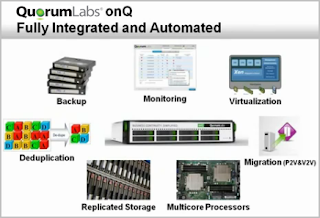Franklin Lakes, NJ, February 15, 2011 — PTS Data Center Solutions announced today it has been accepted as a Market Partner in the Consolidated Edison of New York (Con Edison) Commercial and Industrial Energy Efficiency Program. Specifically, PTS’ focus will fall under Con Edison’s new Data Center Efficiency Program which Con Edison has launched in conjunction with NYSERDA.
The program is specifically designed to offer data centers an unprecedented opportunity to reduce operating costs, improve energy efficiency, and reduce carbon output. In particular, within Con Edison’s coverage area, PTS will assess data center operations and make detailed energy efficiency improvement recommendations of both a facility & IT infrastructure nature.
New York State contains the second highest concentration of data centers in the US and a Lawrence Berkley National Labs study found that data centers in New York consume an estimated 4.5 billion kWh/year at a cost of $584 million/year. The program looks to support data center operators who are capacity constrained and/or looking to reduce energy usage and, therefore, operating expenses.
PTS will leverage its long history in data center consulting, engineering, infrastructure, construction, and maintenance to deliver Energy Usage Assessments with clearly defined energy savings recommendations. These recommendations may span the facility support infrastructure and IT equipment as PTS incorporates a comprehensive and holistic approach to data center analysis and redesign.
PTS President, Peter Sacco, said “PTS is pleased to join the Con Edison Market Partner Network. We will provide exceptional Energy Efficiency Assessments supporting our reputation in the tri-state area as a leading provider of consulting services related to data center greening and optimization. We are excited to work with data center providers who understand the impact successful energy efficiency improvements will have on the environment.”
Energy savings services offered through the program include:
- Outreach, Education, and Marketing to recruit data centers into the initiative;
- Technical Assistance Studies for data center, computer room, and server room operators interested in identifying their energy efficiency options;
- Energy Improvement Installation Incentives to off-set the cost of energy efficiency improvements. Improvements could include lighting, cooling, insulation, VFDs, server upgrades, virtualization, storage consolidation and other energy-related measures; and,
- Customer Installation Support to provide participating data centers with a complete package that addresses all energy related issues critical to their facilities’ operation.
A customized portfolio of energy efficiency services will be tailored to a data center’s specific energy needs.
To learn more about the Con Edison program as well as other PTS Energy Efficiency services, feel free to contact PTS at 201-337-3833, visit http://www.ptsdcs.com/energy-efficiency-assessments.asp, or email us at marketing@PTSdcs.com. You can also get program information at the Con Edison program website http://www.coned.com/energysavings.
About Consolidated Edison Company of New York (Con Edison)
Con Edison is a subsidiary of Consolidated Edison, Inc. [NYSE: ED], one of the nation’s largest investor-owned energy companies, with approximately $13 billion in annual revenues and $35 billion in assets. The utility provides electric, gas and steam service to more than three million customers in New York City and Westchester County, New York. For additional financial, operations and customer service information, visit us on the Web at www.conEd.com, at our green site, www.coned.com/thepowerofgreen, or find us on Facebook at Power of Green.
About PTS Data Center Solutions
Founded in 1998, PTS is a turnkey solutions provider specializing in data center and computer room consulting, engineering, infrastructure, construction, and maintenance services. We offer a broad range of project experience in designing data centers, computer rooms, and technical spaces. We employ industry best practices in integrating proven, ‘best-of-breed’, critical infrastructure technologies that result in always available, scalable, redundant, fault-tolerant, manageable, and maintainable mission critical environments.
In today's highly competitive climate where businesses can't stop and downtime is measured in profits lost, PTS offers survey, assessment, strategy, planning, feasibility, engineering, design, construction, commissioning, implementation, monitoring, maintenance, and predictive analysis services for protection against of some of the leading causes of critical systems downtime, hardware damage, data loss, and decreased employee productivity. Highly respected in our industry, PTS sets the standard for ‘always available’ solutions for data center and computer room environments.
To learn more, visit the company’s website at www.ptsdcs.com.
###
Contact Information:
Larry Davis
Director of Marketing
201-337-3833 x123
ldavis@ptsdcs.com

























.jpg)